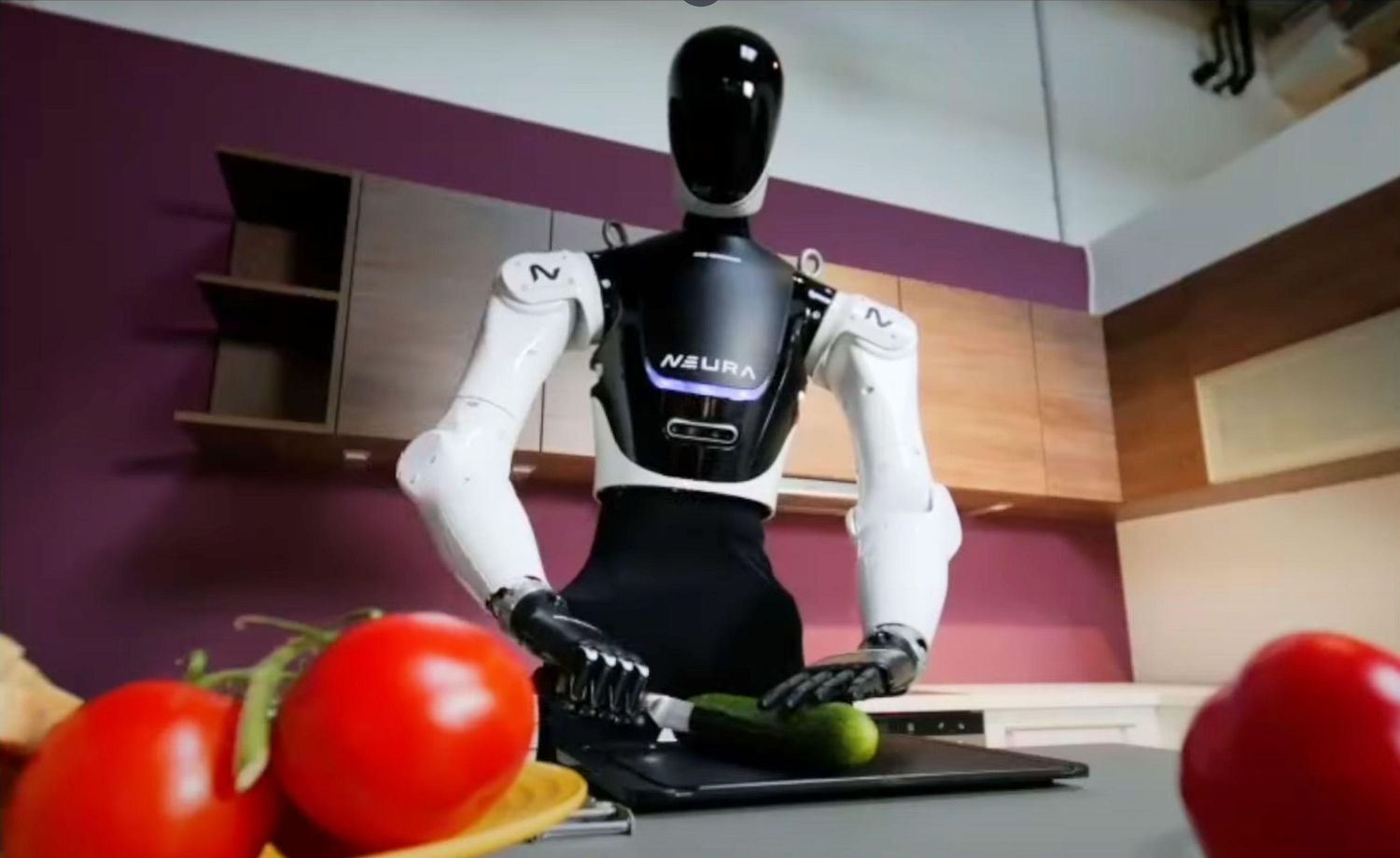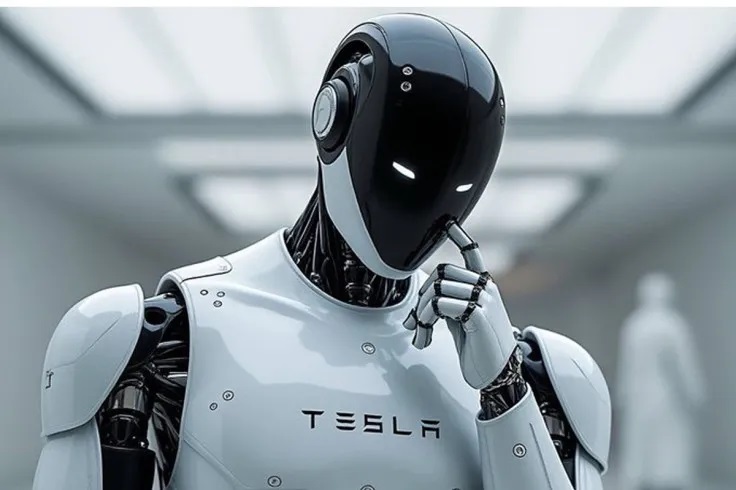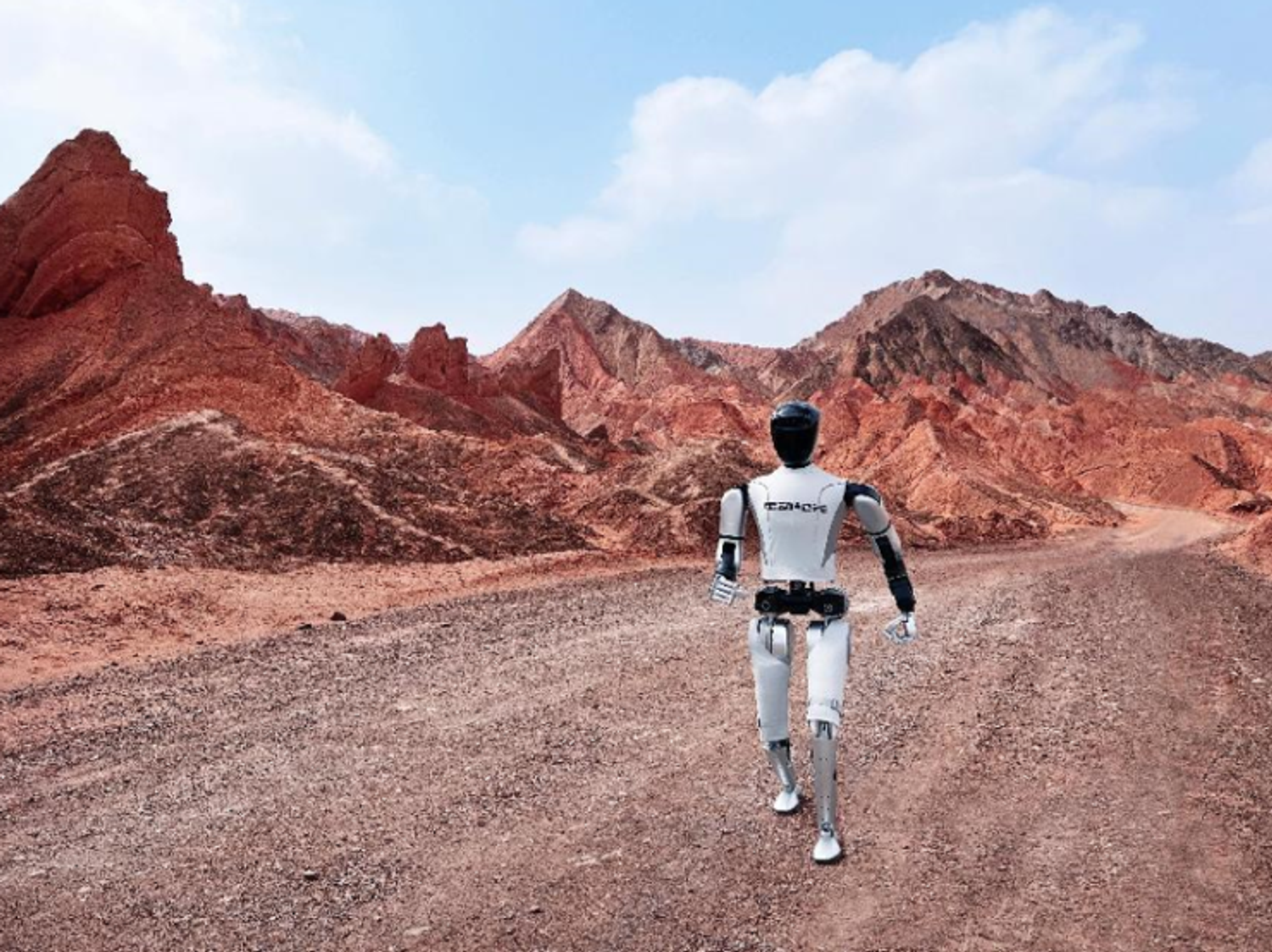4NE‑1
4NE‑1 is a next-generation humanoid robot built by Neura Robotics to seamlessly collaborate with humans in industrial and assistive roles. It features full-body sensor coverage, human-like bipedal mobility, AI-based perception, and modular limbs for flexible tasks. The robot uses Neura’s fusion of visual, auditory, and tactile inputs, allowing it to learn, adapt, and safely operate in dynamic environments. It’s engineered for long-term autonomous use and is intended to support workflows in manufacturing, logistics, caregiving, and research.
Robot Specifications
- Key FeaturesKey Features
- Top Features
- Other Features
Dimensions
Height: 180 cm; Width: 60 cm; Depth: 40 cm
Speed
3–5 km/h
Runtime
Designed for continuous multi-shift operation with battery swapping
Charging Time
Not specified (supports battery hot-swap)
Battery Pack
Modular dual-battery system (capacity undisclosed)
Connectivity
Wi‑Fi, 5G, Ethernet
User Interface
Voice and gesture interaction; screen on head for feedback
Battery Life
Approximately 5 years
Compatible Devices
Potential IoT device integration; no consumer smart assistant support confirmed
Sensors
Omnidirectional 3D vision, force-torque sensors in all joints, touchless human detection (NEURA Omnisensor), microphones, artificial skin
Cloud Integration
Yes, for updates, skill-sharing, and training
Available Countries
Europe USA China Japan Taiwan (global rollout in progress)
App Integration
Supports Neuraverse app platform for skills/modules
Available Colours
White, grey; customizable screen elements
Warranty Info
1–2 years (configurable support contracts)
Carrying Capacity
Up to 100 kg (third-generation arms)
Review Videos
Watch expert reviews and demonstrations of this robot
More Humanoid Robots
Discover more robots in the same category
Frequently Asked Questions
Get answers to common questions about this robot
Q1. What is the height and weight of the 4NE‑1?
The 4NE‑1 stands around 180 cm tall and weighs approximately 80 kg
Q2. What payload can the 4NE‑1 carry?
It supports payloads from 15 kg up to 20 kg, depending on configuration
Q3. How fast can 4NE‑1 move?
The robot travels at around 3 km/h (up to 5 km/h in some configurations)
Q4. What is the runtime on a single battery?
It can operate up to 5 hours per charge in standard use
Q5. Does it support continuous operation?
Yes—it has an intelligent dual‑battery system enabling 24/7 use via hot‑swap
Q6. What type of sensors does it include?
Equipped with 360° 3D vision, depth cameras, LIDAR, force‑torque sensing, artificial skin, and touchless human detection
Q7. What safety features are integrated?
Touchless safe human detection, sensor skin that senses before contact, and force feedback ensure safe interaction
Q8. How many degrees of freedom does it have?
Its body features around 25 DOF, including 7‑DOF arms
Q9. Can its arms be customized?
Yes—arms are exchangeable with modular forearms and hands to match tasks
Q10. What kind of AI and cognition does it use?
It runs multi‑layered cognitive AI with reinforcement learning, computer vision, and language models, including cloud-based processing
Q11. How does it interact with humans?
Through voice commands, gesture recognition, emotion detection, touch sensing, and head‑mounted display
Q12. What are typical use cases for 4NE‑1?
Industrial tasks, logistics, material handling, quality inspection, plus domestic chores like cleaning, cooking, and patient assistance
Q13. Can it operate autonomously in unstructured environments?
Yes—it navigates dynamic, cluttered spaces and can climb stairs and handle terrain
Q14. What is the strength of its joint actuators?
High‑torque leg joints deliver around 490 N·m enabling lifting and robust movement
Q15. What is the maximum lifting capacity?
It can lift up to 100 kg with its joint technology and strong actuators
Q16. Does it support mobile and remote operation?
Yes—its platform allows remote control and autonomous navigation
Q17. What human detection technology is used?
Patent‑pending touchless detection can sense humans even when partly obstructed
Q18. Is there developer and app integration?
Yes—it connects to the Neuraverse ecosystem where third parties can develop and share robot “skills”
Q19. Who collaborated on its AI development?
It uses NVIDIA’s AI platform (e.g. Isaac GR00T) for enhanced perception and simulation capabilities
Q20. When was this third-generation model unveiled?
It debuted in June 2025 at Automatica, showcasing dual‑battery support, sensor skin, and 100 kg lift capacity
Reviews & Ratings
What users think about this robot
Share Your Feedback
Help us improve! Share your thoughts, suggestions, or report any issues.
Login Required
Please log in to share your feedback with us.




